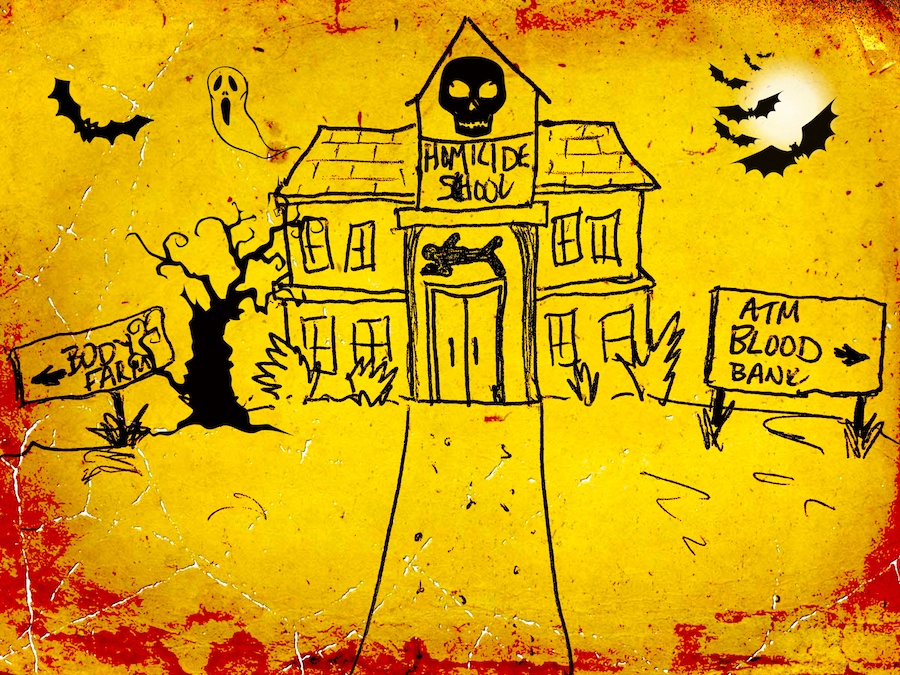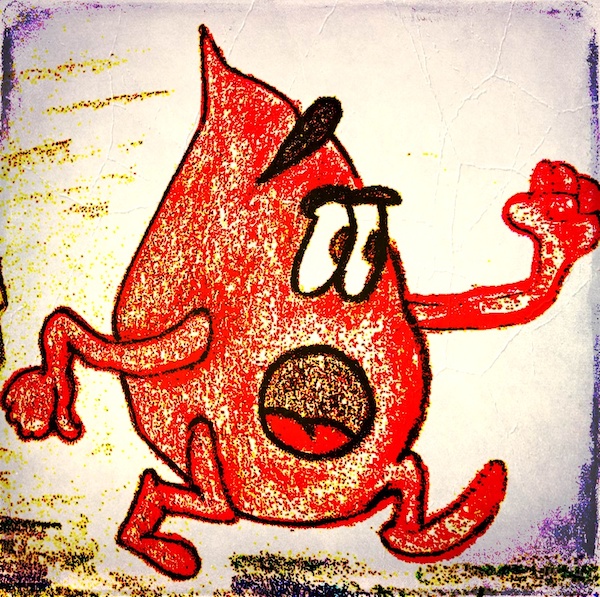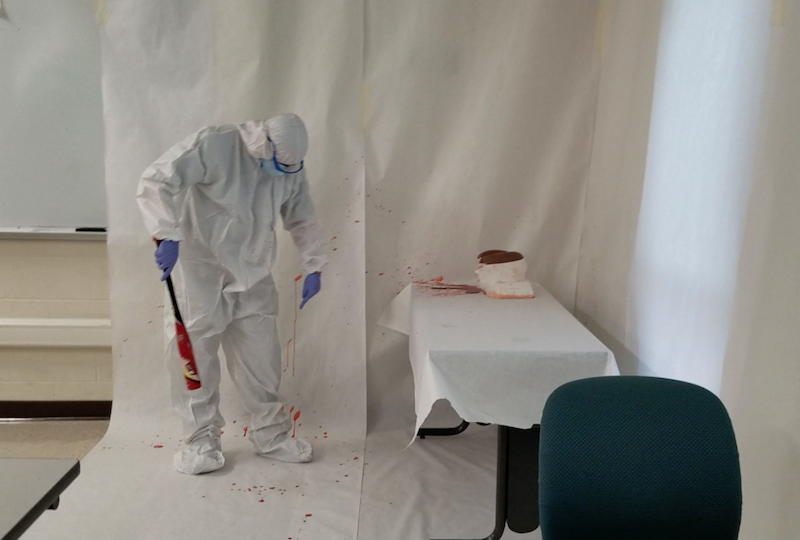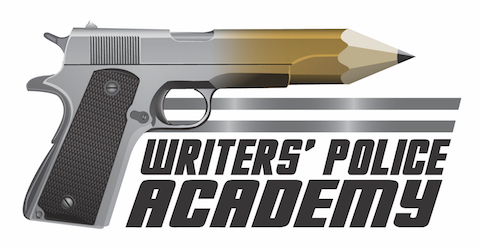Bloodstain Pattern Analysis (BPA) is the study of the shapes, sizes, and locations of bloodstains. The study also determines how the patterns and stains came to be distributed in the manner in which they’re found.
Here, for your CSI library, are a few terms to help the characters in your books sound as if they’ve attended The Graveyard Shift’s …
Homicide School

So sharpen your pencils, take a sip of coffee, and let’s begin …
Accompanying Drop– small blood droplet produced as a by-product when other drops strike a surface (potions of larger drops).
Altered Stain – bloodstain that changed since its original formation.
Angle of Impact – degree of incline/angle at which a blood drop strikes a surface.
Arterial Spurting Pattern – bloodstain pattern(s) caused as blood streams from the body due to pressure from a severed or punctured artery. Blood squirts from the wound with each beat of the heart.
Backspatter Pattern – a result of blood drops traveling in the opposite direction of the force applied, such as when a person is struck with a blunt object, or when flesh is penetrated by a bullet or other projectile.
Bloodstain – deposit of blood on any surface.
Bloodstain pattern – the grouping of bloodstains/droplets/smears, etc., that indicate the manner in which the blood was deposited.
Bubble Ring – circles, or rings, formed when blood containing air bubbles dries and retains the circular shape of those bubbles.
Cast-off Pattern – a bloodstain pattern that occurs when blood-drops are thrown from a blood-bearing object, such as when a killer repeatedly swings a bloody hammer.
Directionality – indicates the direction blood was moving at the time it struck a surface. The shape of the drops are good indicators of direction of travel.

Draw-Back Effect – blood in the barrel of a firearm that has been pulled/sprayed backward into the muzzle.
Drip Pattern – formed when blood drips into other blood.
Drip Stain – a free-falling drop that formed due to gravity.
Drip Trail – bloodstain pattern formed due to the movement of a source of drip stains (a bleeder, a bloody baseball bat that’s dripping blood, etc.).
Edge Characteristic – features of the perimeter of a bloodstain.
Expiration Pattern – bloodstain pattern caused when blood is forced, by air, from the nose, mouth, or a wound.
Forward Spatter Pattern – pattern formed by blood drops traveling in the same direction as the force that caused the spatter.

Bloodstain pattern investigation workshop – 2017 Writers’ Police Academy ~ RJ Beam, instructor
High Velocity Impact Spatter (HVIS) – pattern caused by a high velocity impact /force such as that produced by a gunshot or machinery—farm equipment, factory motors, gears, and mechanisms, etc.
Impact Pattern – bloodstain pattern caused when an object strikes liquid blood, sending smaller droplets in random directions.
Insect Stain – bloodstain resulting from insect activity.
Low Velocity Impact Spatter (LVIS) – bloodstain pattern caused by a low impact/force to a blood source.
Mist Pattern – pattern formed when blood is reduced to a fine spray of micro-drops due to the force applied.

Bloodstain pattern session …Dexter-style – 2017 Writers’ Police Academy
Parent Stain – bloodstain from which a satellite stain originated.
Point (Area) of Origin — The common point where the trajectories of several blood drops can be traced.
Pool – an accumulation of liquid blood on a surface.
Projected Pattern – pattern produced when blood is released under pressure, such as arterial bleeding.
Satellite Stain – smaller droplets that surround a parent stain as a result of blood striking a surface.
Saturation Stain – the accumulation of liquid blood in an absorbent material, such as bed linen or clothing.
Swipe Pattern – bloodstain pattern caused by the transfer of blood from a moving surface onto another, with characteristics that indicate motion/rubbing/swiping between the two surfaces.
Target – any surface onto which blood has been deposited.
Transfer Stain – bloodstain resulting from contact between a wet blood-bearing surface and another. Sometimes it’s possible to see a recognizable imprint/shape of the bloody object on the second surface.
Void – absence of blood in an otherwise continuous bloodstain or bloodstain pattern. Perhaps an object was there, in the area of the void, when the blood was deposited, blocking it from landing in that spot. Then someone moved the item afterward, leaving the clean section.
Wipe Pattern – created when an object moves through an existing wet bloodstain, altering its appearance.
** Attention Writers, Sponsors, Readers, and Fans **

This year marks the 10th anniversary of the Writers’ Police Academy. That’s 10 years of helping writers “get it right” with actual hands-on police training.
We appreciate all the support over the years and we’re looking forward to the most thrilling and exciting event we’ve ever produced – #2018WPA. If you’ve ever wanted to attend the WPA, I STRONGLY urge you to do so this year. Openings are available.
Readers and fans are welcome to attend and train along with their favorite authors. Past attendees include Jeffery Deaver(2018 Guest of Honor), Michael Connelly, Lisa Gardner, Tami D Hoag, Karin Slaughter, Kathy Reichs, Christopher Reich, Lee Child, Lee Goldberg, Marsha Clark, Kendra Elliot-Boucher, Melinda Leigh, Katherine Ramsland and many, many more!
Again, If you’ve ever wanted to attend the WPA, I STRONGLY, WHOLEHEARTEDLY, urge you to do so this year. Openings are available … this year. Could be your last chance. I’m just saying …


